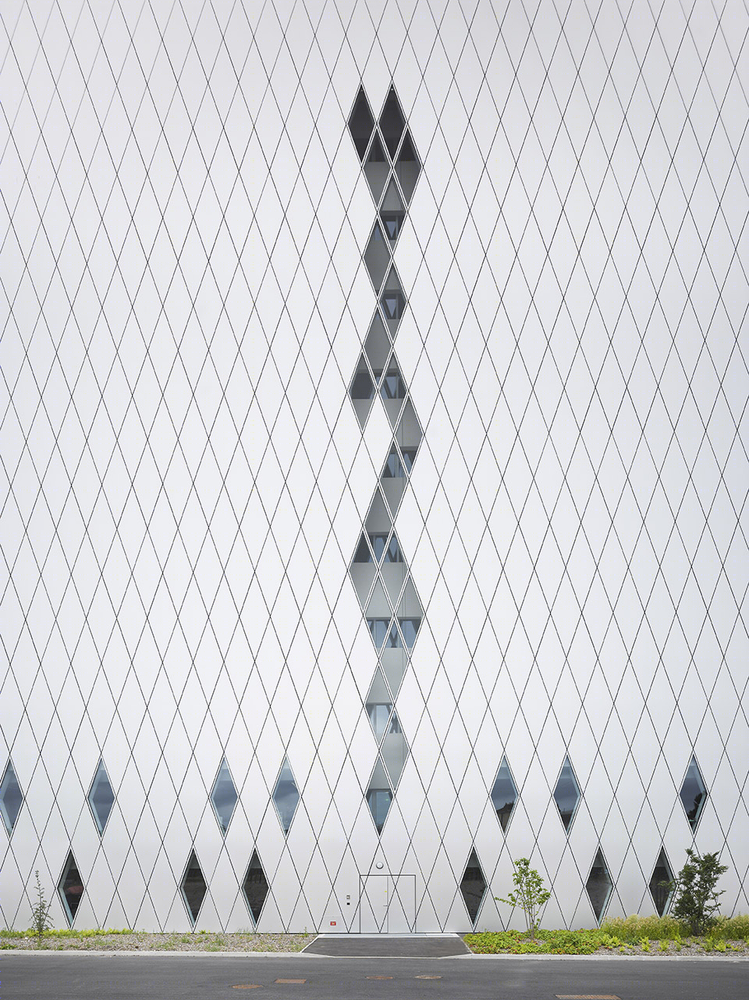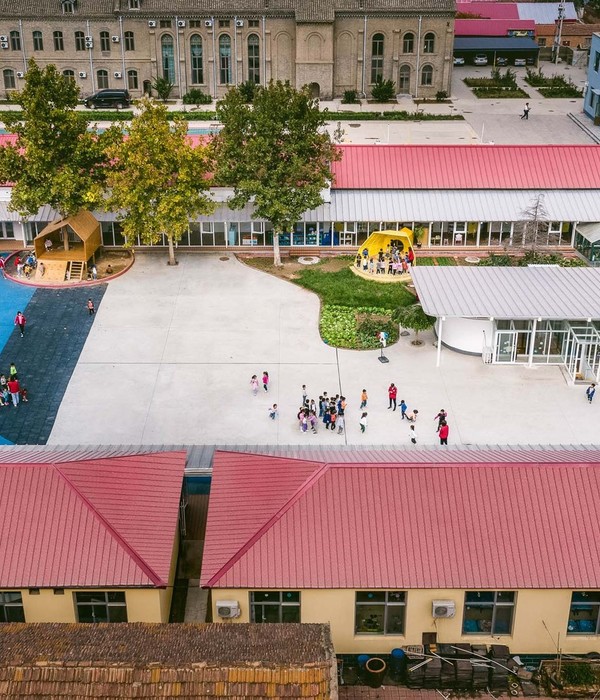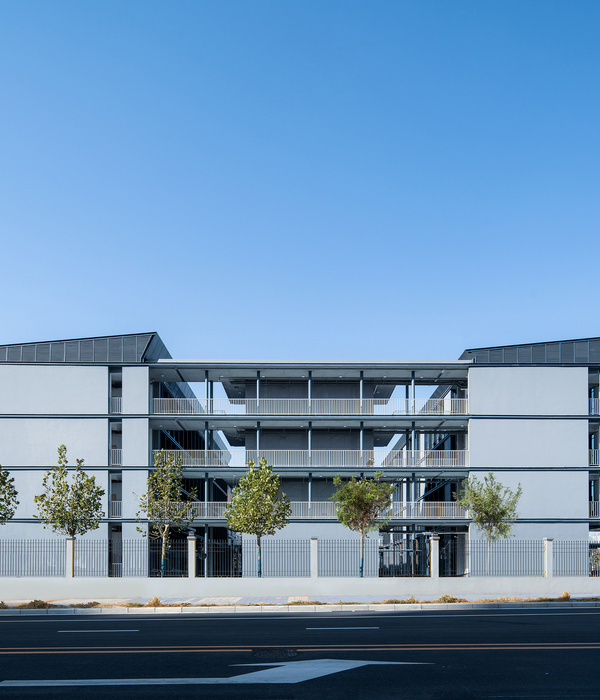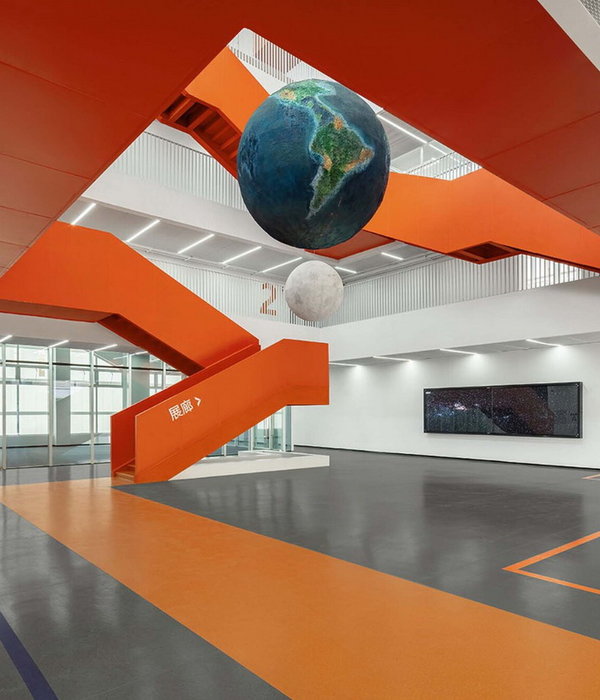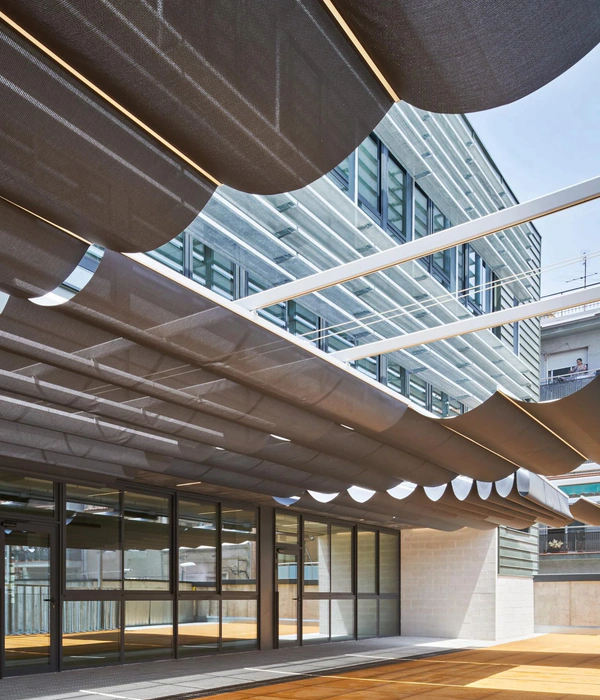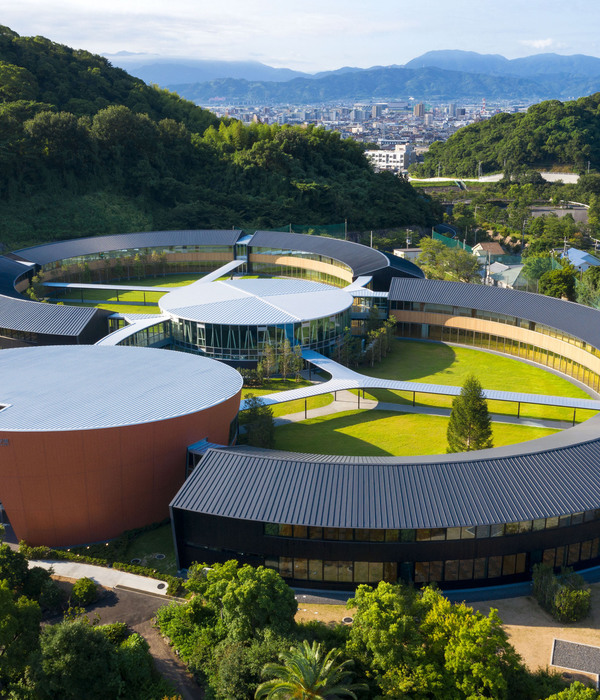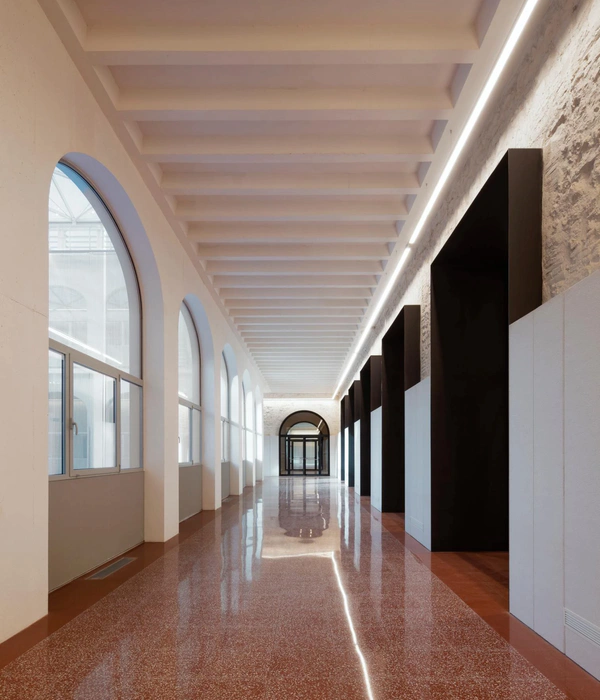新法国国家档案馆 | 悬浮记忆的现代综合体
新法国国家档案馆所在的独特城市环境,赋予了它混乱性与秩序感的对立统一。这种反映在综合体组织方式上的双重性,也让项目的设计概念得以诞生和发展。
The project of the New National Archives of France draws its inspiration from the surrounding reality, from the city seen as coexistence of chaos and order. The concept is born and takes place from this duality which is reflected in the organization of the complex.
▼项目概览,overview © Roland Halbe
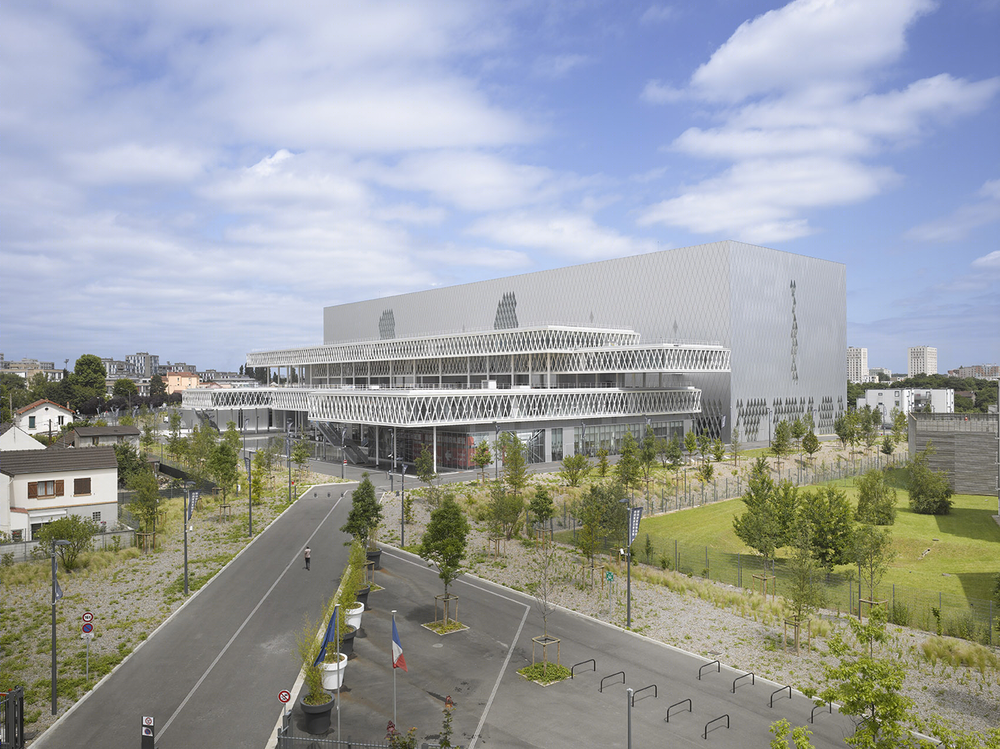
团队最开始的计划是弄清该地及其在地域和社会文化背景下的特征,以揭示一种独特的身份。项目的打造思路是遵循建筑的基本原则,并根据内部社区的需求来创造空间。整个档案馆的设计,旨在增强其所在的圣丹尼斯河畔皮耶里菲特地区的地理和建筑景观意图。该综合体并非按照自我参照式建筑来设计,而是被打造为一个可以承载记忆和集体身份,同时也向当代艺术丰富的表现形式开放的作品。团队没有从一种沉思的角度去思考设计,而是将重点放在如何让观众发现、研究和参与其中。
The initial choice was to investigate the site and its characteristics in both territorial and socio-cultural contexts to reveal an unique identity. The work has therefore been thought following a cardinal principle of architecture to create spaces according to the needs of the communities that populate them. The design of the New National Archives of France has followed the intent of enhancing the geographical and architectural landscape of the area Pierrefitte sur-Seine Saint Denis, where the building inserts itself. The complex has not been designed as a self-referring architecture, but as a work that could hold the memory and the collective identity, at the same time open to contemporary artistic expressions. It has not been thought in a contemplative perspective, but in a perspective of discovery, research and participation for the audience.
▼项目正立面,front facade © Roland Halbe
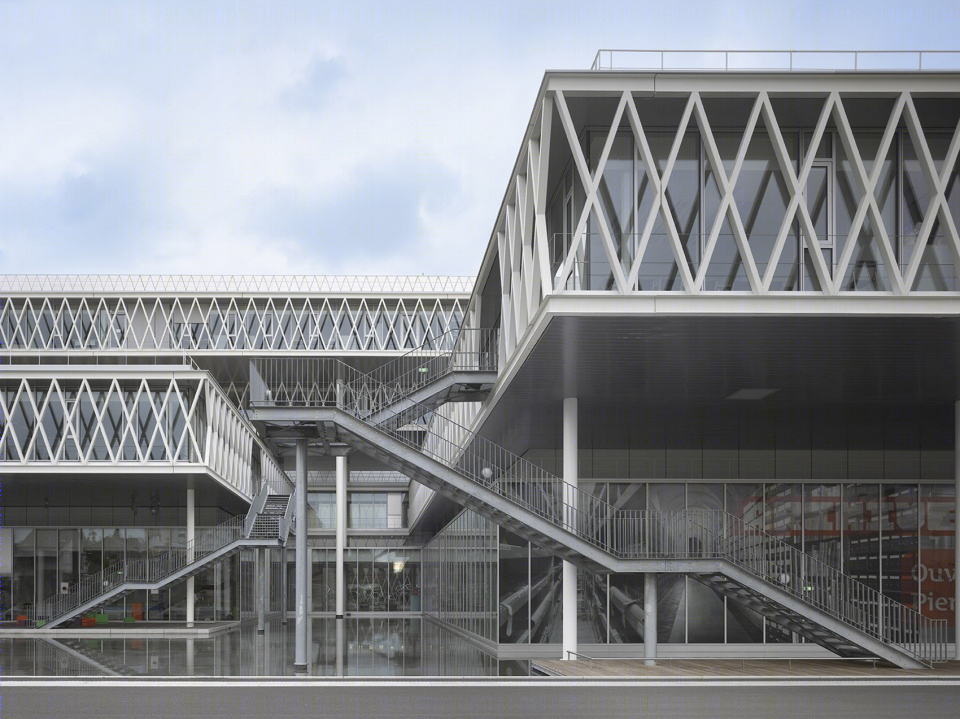
该项目由两个主要体块组成:一个是水平延伸的悬空、轻盈、透明体块;另一栋高挑而有张力的建筑仿佛锚定在地面,反光的体量显现出磅礴的气势。朝着城市延伸的第一栋楼容纳了办公室、会议室和展览室,由被称为“人造卫星”的悬臂体量组合而成。外立面多为玻璃幕墙,为不同比例的体量带来轻盈和透明感。这些体量相互依存,并以“悬浮”的姿态在水面上堆叠。档案大楼雄伟壮观,被视为一个纪念和研究的场所,其中容纳了档案储存室和阅览室。铝制“表皮”覆盖在整栋大楼的外部,而小面积嵌入式玻璃窗的设置则保障了阅览室和入口区域的充足阳光。在这座极具雕塑感的“高贵”建筑前方,有一池泛着波光的清水,这让整栋大楼看起来就像一个藏在水幕中的宝物。
▼堆叠的悬浮体量,stacked suspended volume © Roland Halbe

The project is composed of two main “bodies”: one that extends horizontally, “suspended, lightweight, transparent”; the other with a tension in height, “anchored to the ground, imposing, reflective”. The first, stretching out towards the city, consists of cantilevered volumes called “satellites” that accommodate the offices, the conference room and the exhibition room. The facades, mostly glazed, give lightness and transparency to the volumes of different proportions, that follow each other and overlap in “suspension” on the surfaces of the water. The building that accommodates the Archives is an imposing monolith thought as a place dedicated to memory and research. It houses the archival documents and the reading room. The facades of the monolith are coated with aluminium “skin” that runs throughout the volume, except for some glazed insertions that allow the amount of natural light in the reading room and the entry route. The “noble” sculptural building, with a basin in part lapped against it, reminds the idea of a precious object, a treasure chest, that is reflected in the water veil.
▼小面积嵌入式玻璃窗的设置则保障了阅览室和入口区域的充足阳光,the small-area embedded glass windows ensure sufficient sunlight in the reading room and entrance area © Roland Halbe
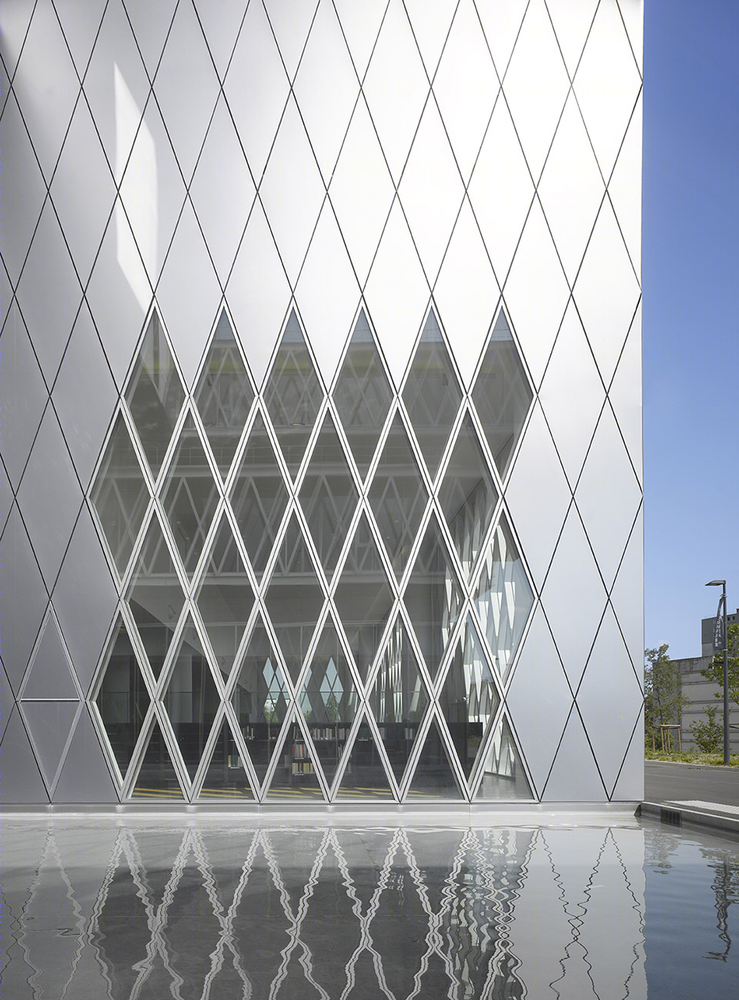
水池广泛遍布于档案馆大楼、“人造卫星”及其底部空间。水池上方的走廊在两座大楼之间建立了联系。水面赋予了建筑本身,以及一些在建筑立面的反射光影效果下产生的空隙和空间以变化之感。菱形状图案在档案馆大楼的铝质覆层和”人造卫星”体量的玻璃外墙中都被重复使用。
在两座大楼之间,矗立着Antony Gormley的艺术作品。这件珍贵的雕塑作品就像是从水中汲取了足够力量,接着从水面升起。它以一种现代化的方式重构了空间,沿综合体的外墙蜿蜒而上。Pascal Convert的作品象征性地追溯了与记忆的联系,“人造卫星”体量前的区域也被团队打造了一系列混凝土“保险箱”。它们以浮雕的形式展示了一些在集体记忆中留下过印记的人物的面孔。艺术装置被紧紧地固定在地面上并与档案大楼相连,就像树根一样扎入记忆深处。
▼水池上方的走廊在两座大楼之间建立了联系,the corridors above the pool established a connection between the two buildings © Roland Halbe
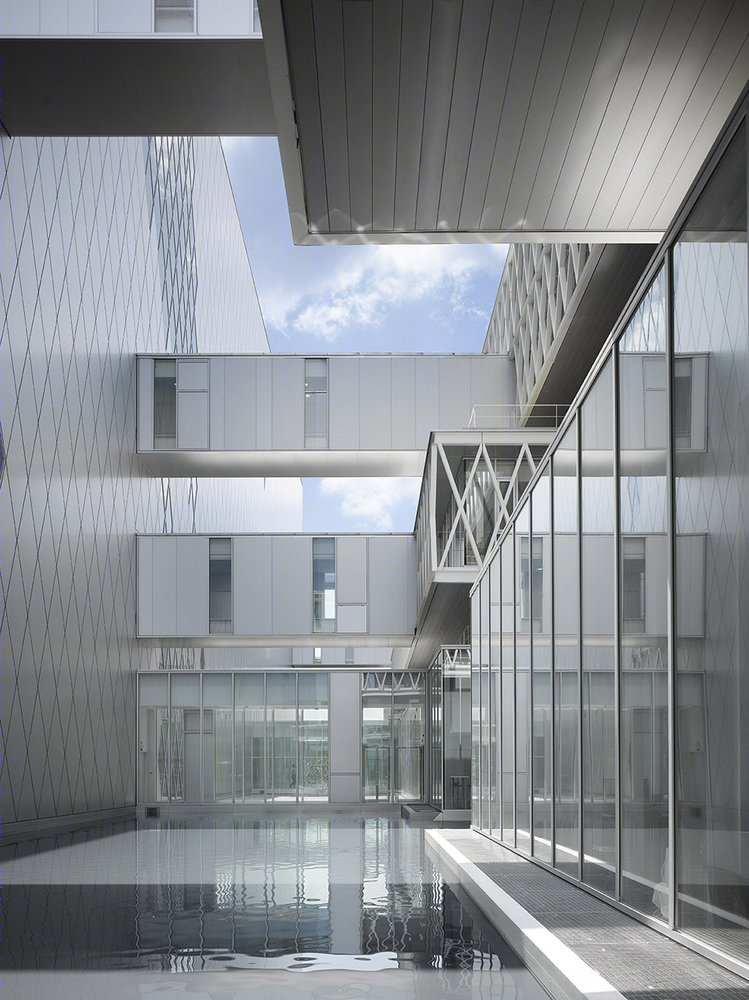
▼Antony Gormley的艺术作品矗立在两栋大楼间,Antony Gormley’s artwork stands between the two buildings © Roland Halbe
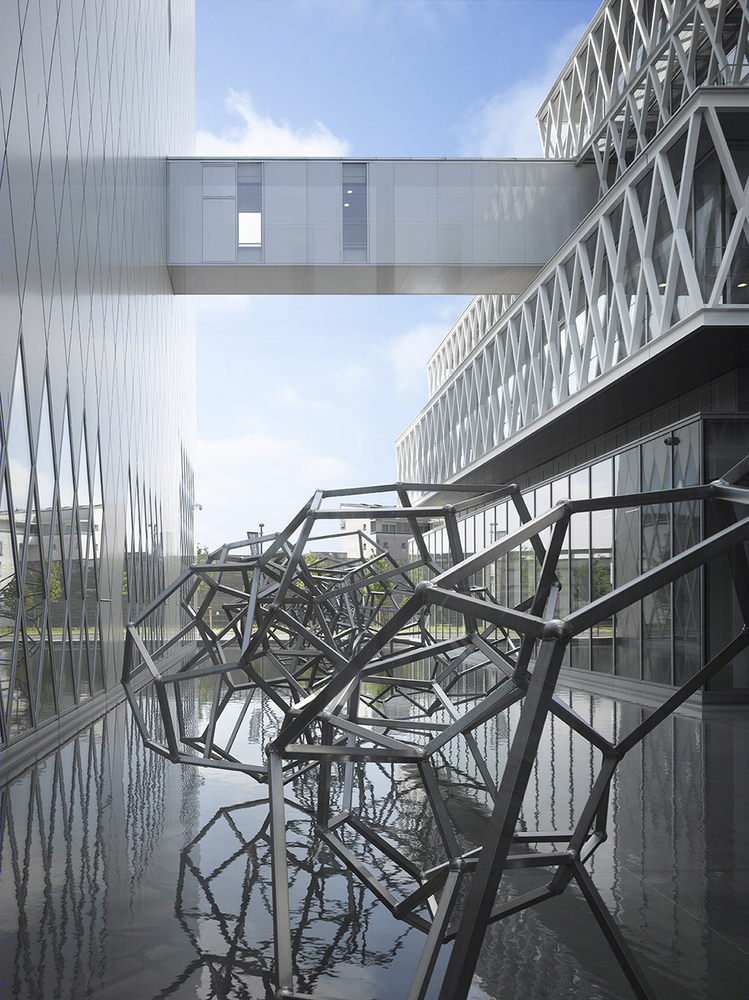
The basins insert themselves between the building of the Archives, the “satellite” volumes and at the foot of the satellite volumes. Walkways above them create a connection both between the cantilevered volumes and the two “bodies”. The water veil becomes a vehicle of change for the architecture, designing voids and new spaces, thanks to the reflections and the play of natural light created by the cuts of the suspended volumes and the “skin” of the monolith. The facades of both “bodies” follow a lozenge geometry that is repeated both in the aluminium cladding of the building of the Archives and in the glass facades of the “satellite” volumes.
Between the monolith and the “satellite” volumes stands the artwork by Antony Gormley. A precious sculptural object that rises from the veil of the water below, like to draw strength from it. This redesigns the spaces in a contemporary way, winding along the facades of the architectural complex. The link with the memory is symbolically traced in the work of Pascal Convert, a series of concrete “strongboxes” set in the area in front of the “satellite” volumes. These show in relief the faces of some personalities that left their mark on the collective memory. The art installation is tightly anchored to the ground, as well as the volume of the monolith, like roots sinking into the depths of memory.
▼沿综合体的外墙蜿蜒而上的装置,intallation winds up along the outer wall of the building complex © Roland Halbe
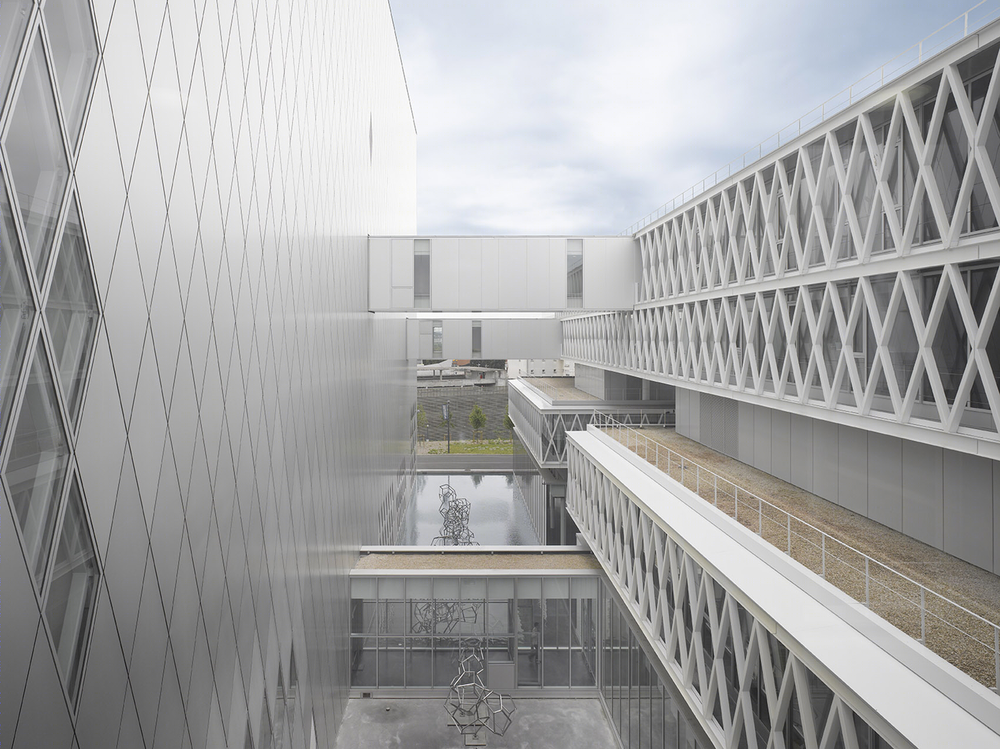
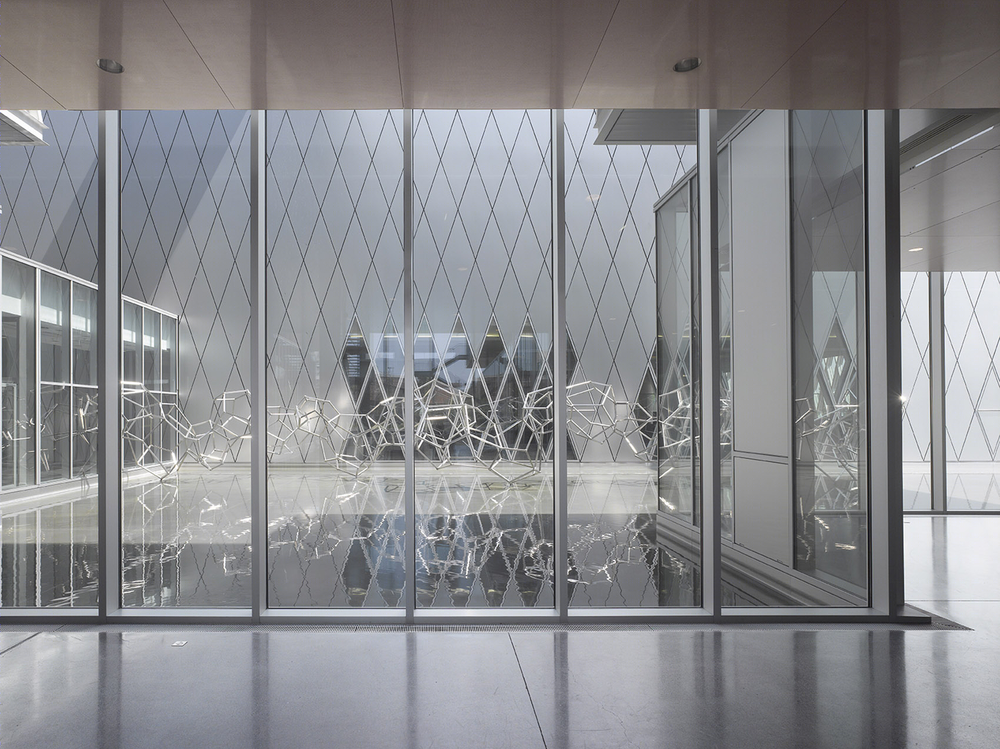
两层通高的大厅欢迎游客的到来。“卫星”大楼的悬浮效果在Susanna Fritscher的艺术干预中得以强调。该作品通过极简的触感,将假天花板打造为红色阴影的不锈钢 “板”,强调了建筑与线条之间的互动。红色赋予了高矮不一的水平突出体量以深度,同时也形成了一种实体与空隙、物质与非物质之间的独特玩味。 建筑内部的大型开阔空间,让人一眼就能识别这个地方的重要性和独特性。在Florence Mercier的景观设计中,环境的重要性,以及地域的重要性都以具体的形式体现出来。他的绿地设计创造了自然、建筑和观众之间的真正互动。引导游客进入综合体的绿色通道就像一个穿插着不同几何图案、形状和色彩的舞台。
A double-height hall welcomes the visitor. The “suspended” effect of the “satellite” volumes is highlighted by the art intervention by Susanna Fritscher which, through a minimalist touch that consists of the realization of false ceilings as stainless steel “sheets” shaded in red, emphasizes the interaction between the architecture of the complex and the lines of the “satellites” volumes. The red colour gives depth to the volumes that stand out horizontally at different heights, creating at the same time a play of solids and voids, between material and immaterial. The interiors are characterized by large spaces that give an overview that makes immediately perceive the importance and the uniqueness of the place. The importance of context, and therefore the importance of the territory, assumes concrete form in the landscape intervention by Florence Mercier. His design of green spaces has created a real interaction between nature, architecture and the audience. The green walk that introduces and takes the visitor to the complex is like a stage that alternates geometries, shapes, colours and shades.
▼两层通高的大厅,a double-height hall © Roland Halbe
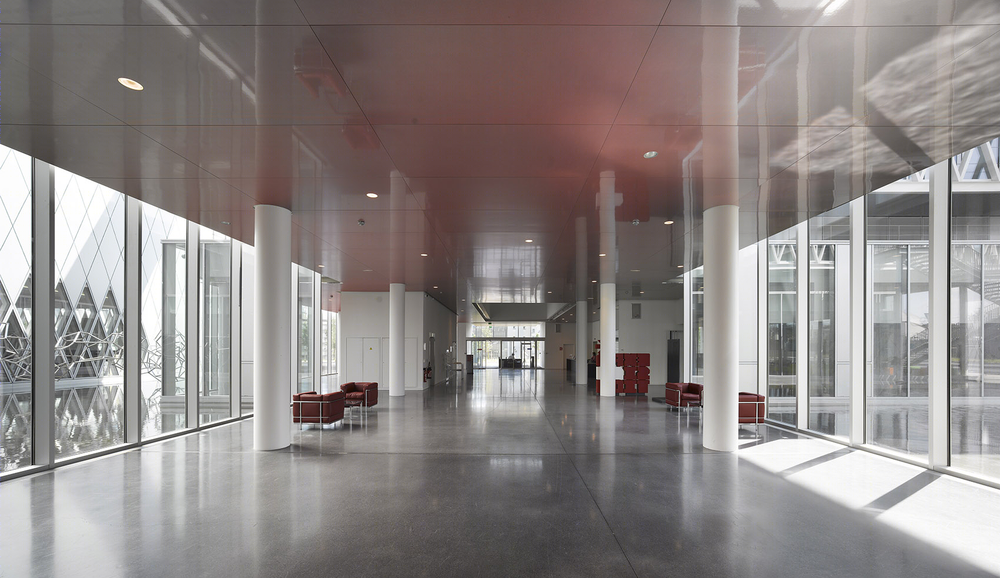
这是一个旨在赋予情感的项目。两座体量代表着两个”世界”,被各式走廊象征性地连接,并在不断的相互参照中,创造出一种根植于记忆,着眼于当代和未来的身份。该项目反映了属于法国乃至全人类的身份和记忆。
A project that aims to give emotions. Two “bodies”, two “worlds”, symbolically connected by walkways that, in a constant cross-reference, creates an identity that is rooted in the memory of the past with an eye to the contemporaneity and the future. The project reflects identity and memory that belong to France and to all humanity.
▼由重复的菱形状图案构成的立面内外,inside and outside the facade composed of repeated diamond-shaped patterns © Roland Halbe
